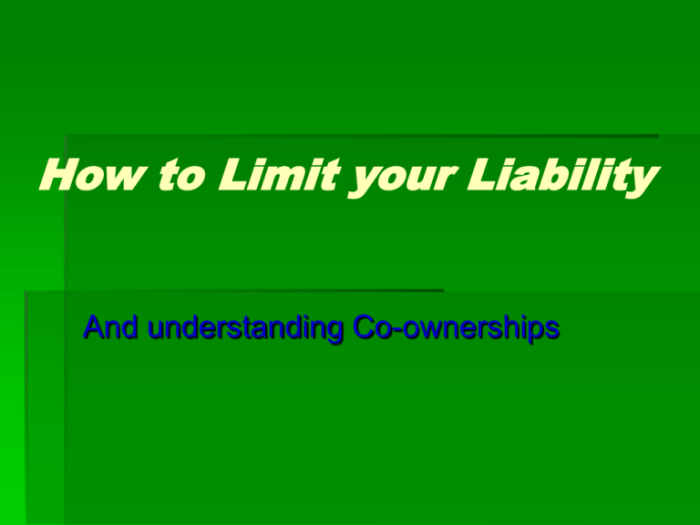Which of the following reduces the opportunity for overinsurance is a crucial topic in the realm of insurance, and this article delves into the various mechanisms that can effectively mitigate the risk of overinsurance. By exploring the advantages and disadvantages of each measure, we aim to provide a comprehensive understanding of their role in preventing policyholders from obtaining excessive coverage.
This article examines the impact of coinsurance, deductibles, replacement cost coverage, agreed value policies, scheduled personal property, and insurance education on the reduction of overinsurance opportunities. Each of these measures will be analyzed to determine its effectiveness and suitability in different insurance contexts.
Coinsurance: Which Of The Following Reduces The Opportunity For Overinsurance

Coinsurance is a type of insurance coverage that requires the policyholder to pay a percentage of the claim, while the insurance company pays the remaining percentage. This percentage is typically expressed as a fraction, such as 80/20 or 90/10. For example, if a policyholder has an 80/20 coinsurance clause and files a claim for $10,000, the policyholder would be responsible for paying $2,000 (20% of $10,000), while the insurance company would pay the remaining $8,000 (80% of $10,000).
Advantages of Coinsurance
- Reduces the opportunity for overinsurance by making the policyholder financially responsible for a portion of the claim.
- Encourages policyholders to take steps to reduce their risk of loss, as they will have to pay a higher percentage of the claim if a loss occurs.
Disadvantages of Coinsurance
- Can be more expensive than other types of insurance coverage, as the policyholder is responsible for paying a higher percentage of the claim.
- Can be difficult to understand for some policyholders, as they may not be familiar with the concept of coinsurance.
Deductibles

A deductible is a fixed amount that the policyholder must pay out of pocket before the insurance company begins to pay benefits. Deductibles are typically expressed in dollars, such as $500 or $1,000. For example, if a policyholder has a $500 deductible and files a claim for $1,000, the policyholder would be responsible for paying the first $500 of the claim, while the insurance company would pay the remaining $500.
Advantages of Deductibles
- Reduces the opportunity for overinsurance by making the policyholder financially responsible for a portion of the claim.
- Lowers the cost of insurance premiums, as the insurance company is taking on less risk.
Disadvantages of Deductibles
- Can be a financial burden for policyholders who have to pay a large deductible out of pocket.
- Can discourage policyholders from filing small claims, as they may not want to pay the deductible.
Replacement Cost Coverage

Replacement cost coverage is a type of insurance coverage that pays the cost of replacing damaged or destroyed property with new property of like kind and quality. This coverage is typically included in homeowners insurance policies and renters insurance policies.
For example, if a policyholder’s house is destroyed by a fire, replacement cost coverage would pay for the cost of rebuilding the house, even if the cost of rebuilding is higher than the actual cash value of the house.
Advantages of Replacement Cost Coverage
- Reduces the opportunity for overinsurance by ensuring that the policyholder is not paid more than the cost of replacing the damaged or destroyed property.
- Provides peace of mind to policyholders, knowing that they will be able to replace their damaged or destroyed property with new property of like kind and quality.
Disadvantages of Replacement Cost Coverage
- Can be more expensive than other types of insurance coverage, as the insurance company is taking on more risk.
- May not be available for all types of property.
Agreed Value Policies
An agreed value policy is a type of insurance policy in which the value of the insured property is agreed upon between the policyholder and the insurance company before the policy is issued. This value is typically based on an appraisal of the property.
For example, if a policyholder has an agreed value policy for their car and the car is totaled in an accident, the insurance company will pay the agreed upon value of the car, regardless of the actual cash value of the car at the time of the accident.
Advantages of Agreed Value Policies
- Reduces the opportunity for overinsurance by ensuring that the policyholder is not paid more than the agreed upon value of the insured property.
- Provides peace of mind to policyholders, knowing that they will receive a fair settlement in the event of a loss.
Disadvantages of Agreed Value Policies
- Can be more expensive than other types of insurance coverage, as the insurance company is taking on more risk.
- May not be available for all types of property.
Scheduled Personal Property
Scheduled personal property is a type of insurance coverage that provides coverage for specific items of personal property, such as jewelry, furs, and collectibles. This coverage is typically included in homeowners insurance policies and renters insurance policies. For example, if a policyholder has scheduled personal property coverage for their jewelry and their jewelry is stolen, the insurance company will pay for the replacement cost of the jewelry, up to the limit of coverage.
Advantages of Scheduled Personal Property
- Reduces the opportunity for overinsurance by ensuring that the policyholder is not paid more than the value of the specific items of personal property that are covered.
- Provides peace of mind to policyholders, knowing that their valuable personal property is protected in the event of a loss.
Disadvantages of Scheduled Personal Property, Which of the following reduces the opportunity for overinsurance
- Can be more expensive than other types of insurance coverage, as the insurance company is taking on more risk.
- Requires the policyholder to keep an accurate inventory of their scheduled personal property.
Insurance Education

Insurance education is the process of teaching policyholders about insurance coverage and how to make informed decisions about their insurance needs. This education can be provided by insurance companies, agents, and brokers. For example, an insurance company may offer a seminar on homeowners insurance to help policyholders understand the different types of coverage available and how to choose the right coverage for their needs.
Advantages of Insurance Education
- Reduces the opportunity for overinsurance by helping policyholders understand their insurance needs and how to avoid overinsuring their property.
- Empowers policyholders to make informed decisions about their insurance coverage.
Disadvantages of Insurance Education
- Can be time-consuming for policyholders to attend insurance education classes or seminars.
- May not be effective for all policyholders, as some policyholders may not be interested in learning about insurance.
Quick FAQs
What is the primary goal of reducing overinsurance opportunities?
Reducing overinsurance opportunities aims to prevent policyholders from obtaining excessive insurance coverage, which can lead to moral hazard and increased insurance premiums for all.
How does coinsurance contribute to reducing overinsurance?
Coinsurance requires policyholders to share a percentage of the loss, thereby discouraging them from overinsuring their property.
What are the advantages of using deductibles to reduce overinsurance?
Deductibles act as a deterrent to overinsurance by requiring policyholders to pay a portion of the loss out-of-pocket.